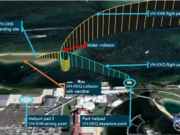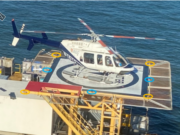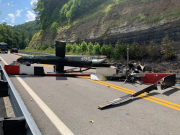The U.S. National Transportation Safety Board (NTSB) is citing the 2016 in-flight breakup of an experimental research and development Bell 525 in its call for the use of recording devices “for parametric data, cockpit audio and cockpit images” during experimental test flights.
The NTSB issued two safety recommendations last week. One recommendation called on the Flight Test Safety Committee, a nonprofit organization formed in the 1990s to encourage flight safety and reduce risks, to develop and issue guidance for the use of recording devices.
A second recommendation, to Bell Helicopter Textron, said the company should “provide information about the lessons learned from the July 6, 2016, accident specific to the benefits of recording devices … during experimental flight test activities to interested manufacturers, flight test industry groups and other appropriate parties.”
The accident occurred during developmental flight tests in advance of type certification. The crew was performing a series of tests at increasing airspeeds with the 525 in “a heavy, forward center-of-gravity configuration” when the helicopter began vibrating, the NTSB said, adding that, “about 21 seconds into the test, the main rotor blades flapped low enough to impact the tail boom, severing it and causing the in-flight breakup of the helicopter.”
The helicopter struck the ground near Italy, Texas, U.S., killing both test pilots. The helicopter was destroyed. The NTSB said the probable cause of the accident was the severe vibration “that led to the crew’s inability to maintain sufficient rotor rotation speed” and to the subsequent crash.
The NTSB said that recorders not only would provide manufacturers with more information about experimental flight tests but also would help manufacturers and investigators better understand circumstances surrounding an accident.
The agency noted that Bell Helicopter addressed the issue before the NTSB issued its recommendations and before resuming 525 flight tests after the accident.
“Cockpit audio is now being recorded by an onboard CVFDR [combination cockpit voice recorder and flight data recorder], and communications to and from the ground monitoring station are recorded by the CVFDR and the telemetry system during all flights,” the NTSB said. “Cockpit video is also being recorded by the instrumentation system and archived at the ground station.”



